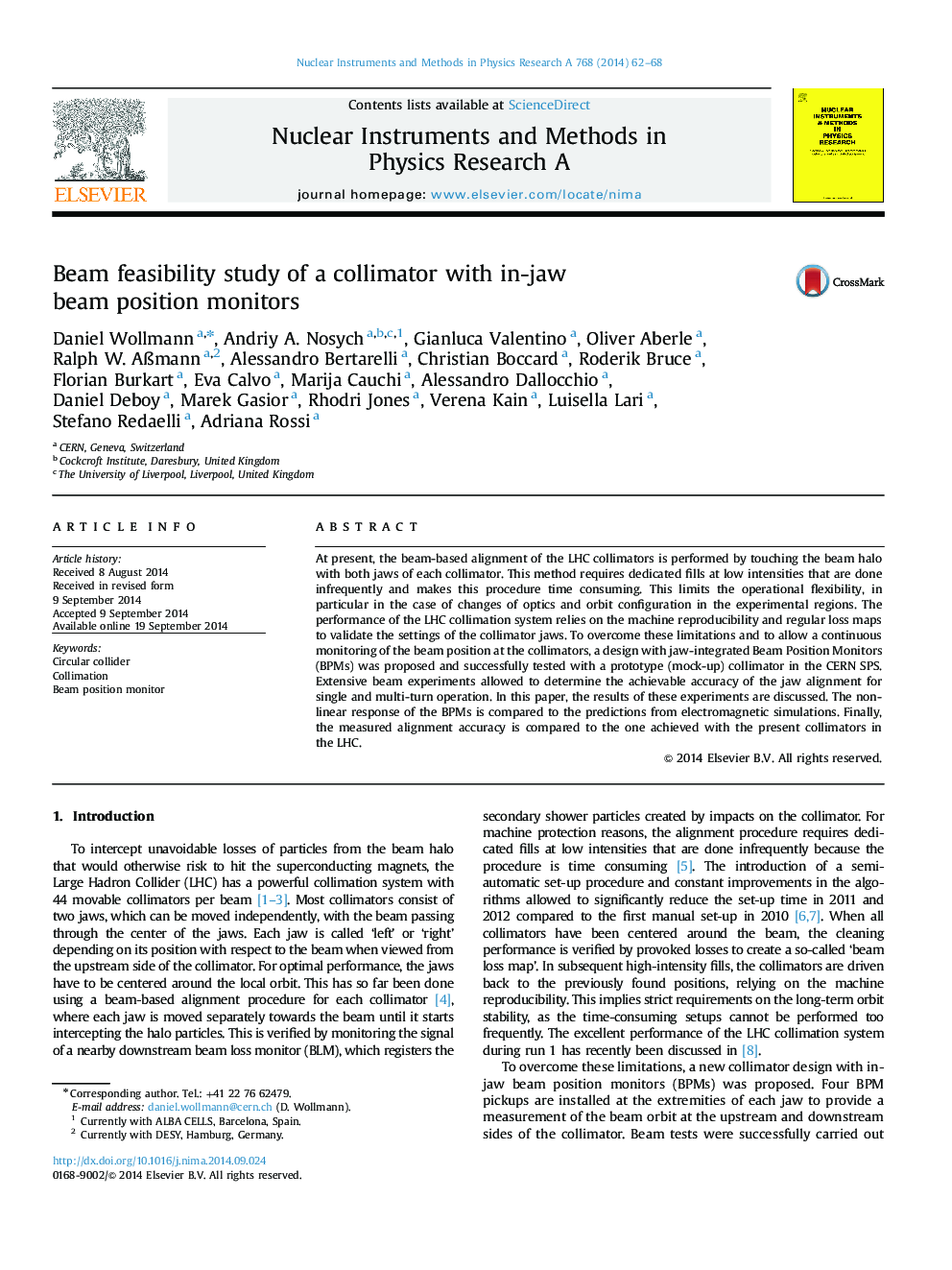| Article ID | Journal | Published Year | Pages | File Type |
|---|---|---|---|---|
| 8174685 | Nuclear Instruments and Methods in Physics Research Section A: Accelerators, Spectrometers, Detectors and Associated Equipment | 2014 | 7 Pages |
Abstract
At present, the beam-based alignment of the LHC collimators is performed by touching the beam halo with both jaws of each collimator. This method requires dedicated fills at low intensities that are done infrequently and makes this procedure time consuming. This limits the operational flexibility, in particular in the case of changes of optics and orbit configuration in the experimental regions. The performance of the LHC collimation system relies on the machine reproducibility and regular loss maps to validate the settings of the collimator jaws. To overcome these limitations and to allow a continuous monitoring of the beam position at the collimators, a design with jaw-integrated Beam Position Monitors (BPMs) was proposed and successfully tested with a prototype (mock-up) collimator in the CERN SPS. Extensive beam experiments allowed to determine the achievable accuracy of the jaw alignment for single and multi-turn operation. In this paper, the results of these experiments are discussed. The non-linear response of the BPMs is compared to the predictions from electromagnetic simulations. Finally, the measured alignment accuracy is compared to the one achieved with the present collimators in the LHC.
Keywords
Related Topics
Physical Sciences and Engineering
Physics and Astronomy
Instrumentation
Authors
Daniel Wollmann, Andriy A. Nosych, Gianluca Valentino, Oliver Aberle, Ralph W. AÃmann, Alessandro Bertarelli, Christian Boccard, Roderik Bruce, Florian Burkart, Eva Calvo, Marija Cauchi, Alessandro Dallocchio, Daniel Deboy, Marek Gasior, Rhodri Jones,
